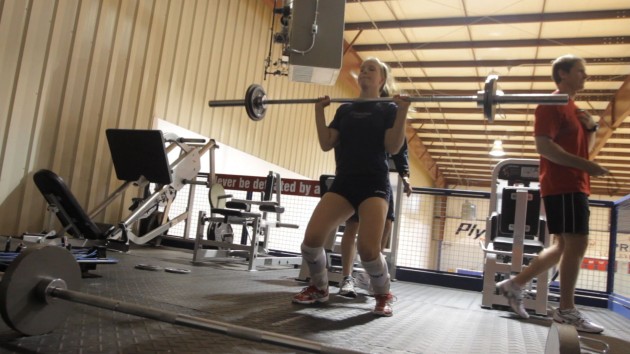
Volleyball strength training
Basics of Strength Training for Volleyball
Develop Joint Flexibility
A workout for volleyball needs to include flexibility training. Most volleyball strength training exercises should use the entire range of motion of major joints, especially the hips, shoulders, knees, and ankles.
Exercises selected for the specific demands of a sport should maintain a balance of muscular strength across joints and between opposing muscle groups.
Exercising smaller muscles in isolation may also be necessary for the specific demands of a sport. For example, volleyball players may develop overuse injuries due to the repetitive nature of the overhead motion of hitting a volleyball.
To prevent these injuries, it may be necessary to include in a workout for volleyball shoulder strengthening exercises that focus on smaller muscle areas.
Develop Tendon Strength
Strength of muscles develop faster than tendon and ligament strength. Therefore, coaches should be careful not to overlook the importance of strengthening ligaments.
Tendons and ligaments grow strong through anatomical adaptation. Anatomical adaptation prepares the body for work by increasing tendon and ligament strength and correcting muscular imbalances.
Develop Core Strength
The abdominals and back muscles surround the core area of the body. Many times injuries could have been prevented just by strengthening the abs and low back.
However, there’s more to core training than just strengthening these two areas.
In sports, the torso acts to support arm and leg actions. A strong core allows athletes to move more efficiently by keeping the core stable while assisting limbs in performing various athletic movements. For example, during the volleyball approach, an attacker that trained their core to stabilize, is better able to transfer power through their limbs (arms and legs) as they jump to hit.
Strength training the core isn’t only about working core muscles in isolation (performing abdominal crunches or back extensions), but more importantly performing core stability exercises or training that takes a great deal of core stabilization.
Train Movements, Not Individual Muscles
By focusing on training movements, muscles are integrated and strengthened more efficiently, therefore increasing athletic performance.
A strength training workout for volleyball should simulate volleyball skill movements.
Volleyball players, like just about all athletes, should include multi-joint exercises in their training.
A triple extension is a good example of a volleyball specific multi-joint exercise. During a triple extension, you apply force with the feet against the ground extending your hips, knees, and ankles.
Cleans and snatches are good examples of power exercises that involve the triple extension movement common for volleyball players to use to improve their block and approach jump height.
Things to Consider When Designing Workouts
Individualization
Each athlete must be trained according to individual ability, potential, and strength training background.
Many coaches make the mistake of designing a workout for volleyball following the programs of successful athletes, disregarding their own athletes needs, experience, and abilities.
Young athletes may not be ready biologically for such programs.
Variables such as biological and emotional maturity, training experience and level need to be considered when designing strength workouts for youth volleyball.
Specificity
To be effective, a program must be designed to develop sport-specific strength.
The role of strength training for sports is to create a stronger physiological foundation in order to improve one’s overall ability to meet the needs of a sport and enhance his or her performance (2).
In considering a strength workout for volleyball, coaches need to think about the prime muscle groups and the dominant energy systems used for volleyball performance.
Strength training specifically to improve volleyball skills leads to a faster strength adaptation and improved sports performance.
Although specificity is an important principle, its long-term application can result in stressful, boring programs, leading to overtraining, overuse injury, and sometimes burnout.
Progressive Overload
Overload refers to working out at a higher intensity than an athlete is used to.
If a training program is to continue producing higher levels of performance, the intensity of the training must become progressively greater.
Progression should be based on the athletes training status and used systematically in a workout for volleyball.
Testing strength helps in designing appropriate training intensity and progression.
Periodization
Improved performance is the direct result of the quality of training.
Variations in training specificity, intensity, and volume should be organized into training cycles.
A workout for volleyball must follow the concept of Strength Periodization, specific goals for each phase leading up to major competitions.
Read more news from our Stretching section, every Sunday a new story! Tomorrow read about Stretching: Focus on flexibility
For more Fun, Fitness news click here.